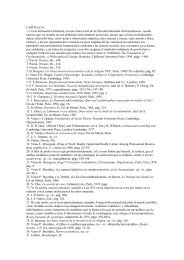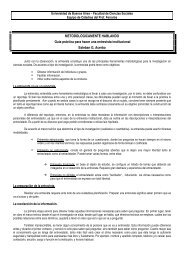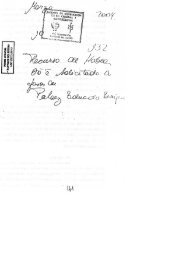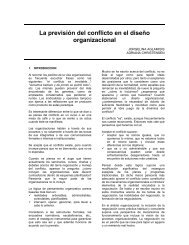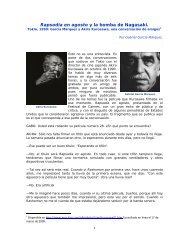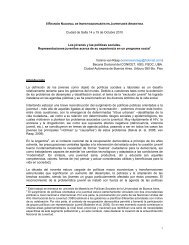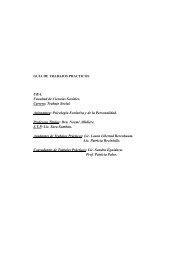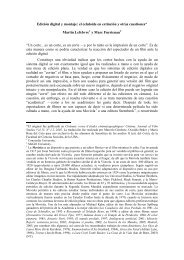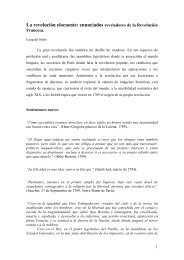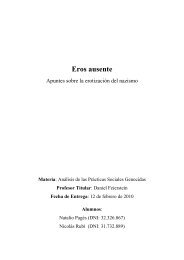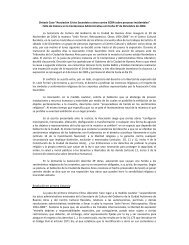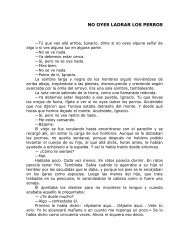Charisma Reconsidered
Charisma Reconsidered
Charisma Reconsidered
Create successful ePaper yourself
Turn your PDF publications into a flip-book with our unique Google optimized e-Paper software.
22<br />
doing so without being crushed, would exceed expectations, and indeed produce<br />
a ‘baffling success’ that would persuade potential followers of the special political<br />
prowess of the leader and the validity of his vision. The leader’s bluster and the<br />
hegemon’s empty threats produce a peculiar dynamic, which conforms to Weber’s<br />
model of the career of the charismatic leader – each time the leader raises the<br />
stakes, the hegemon responds with a threat, to which the leader responds by<br />
defiance, thus passing another ‘test’. In this way (and also by attempting to<br />
negotiate with the leader, which the leader permits only in order to be seen to<br />
refuse to give in, thus passing another test), the hegemon inadvertently builds up<br />
the leader’s charisma.<br />
The tests are ‘artificial’ in the sense that the hegemon and the leader both<br />
understand, unlike the audience, that the threats will not be acted upon. And even<br />
if the hegemon becomes less threatening, it is in the interest of the leader to create<br />
an atmosphere of uncertainty and danger that he can then overcome. Castro, for<br />
example, produces propaganda to create the illusion of an imminent threat from<br />
the United States, which serves to continue the dynamic of charismatic testing<br />
and the illusion of ‘baffling success’. But the same effect was produced during the<br />
1990s, when the Clinton administration attempted to negotiate with Miloˇsevic:<br />
giving him an opportunity to face down the hegemon made it appear that he was<br />
powerful. The European dictators of the first half of the 20th century understood<br />
the same dynamic – the fact that their opponents were less likely to act against<br />
them than their audiences believed allowed for them to surpass expectations,<br />
confirming the idea that their self-conceived ‘missions’ and the worldview that<br />
went with them were valid, and that the promises of the new order that they<br />
represented were not only possible but possible only through obedience to<br />
them.<br />
Weber’s miscalculation with respect to political parties was paralleled in his<br />
view of bureaucracy. He supposed that bureaucratic leadership excluded charisma.<br />
Yet even in bureaucratic organizations, an ability to motivate people to use their<br />
bureaucratic discretion to contribute to the goals of the organization turned out<br />
to be not only important, but increasingly so, as the fixed and rigid bureaucratic<br />
structures of the 19th century gave way to more flexible organizations. In<br />
management studies, charisma became an important concept in the wake of the<br />
discovery of ‘corporate cultures’ that got in the way of needed change. <strong>Charisma</strong>tic<br />
‘change agents’ were people who could change culture by modeling the<br />
desired culture. So the problem became one of identifying such people and their<br />
special traits. This application fits very well with the ‘anthropological’ interpretation<br />
of charisma in the previous section. The basis of resistance to organizational<br />
‘cultural’ change is characteristically closely bound up with fear.<br />
There is obviously a significant theoretical tension between the notion of<br />
charisma as a kind of culturally defined and constituted phenomenon of the sort<br />
that behavioral scientists could measure through psychological tests, and the<br />
eruptive, order-establishing or value-establishing notion of charisma. Indeed,<br />
JOURNAL OF CLASSICAL SOCIOLOGY VOL 3(1)



